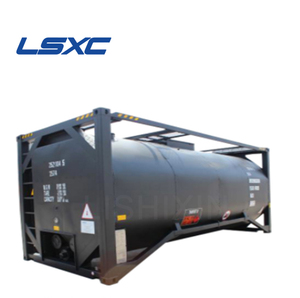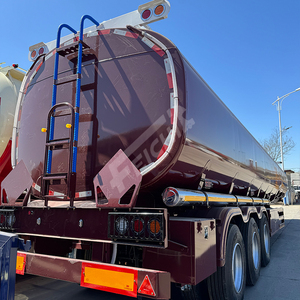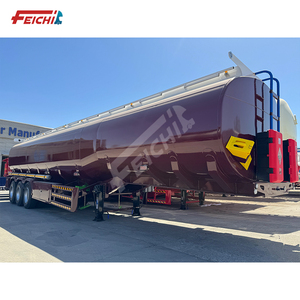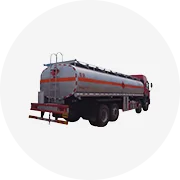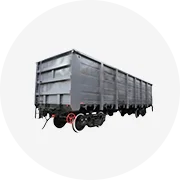Types of Asphalt Tankers for Sale
Asphalt tankers, also known as bitumen tankers, are specialized vehicles designed to transport asphalt—a viscous black liquid or semi-solid hydrocarbon derived from crude oil. These tankers feature sophisticated heating systems that maintain asphalt at optimal temperatures during transportation, preventing solidification and ensuring quality delivery.
Industry Insight: The global asphalt tanker market is growing at approximately 4.5% annually, driven by increasing road construction and infrastructure development projects worldwide.
Bitumen Pressure Distributor
Typically mounted on trucks or trailers, these specialized tankers feature precision distribution systems that enable even and accurate application of bitumen over treated surfaces. Their advanced pressure systems force bitumen through calibrated nozzles for uniform spray patterns.
Best for: Road construction, highway maintenance, precise asphalt application
Standard Bitumen Tanker
Designed for bulk transportation and delivery of bitumen, these tankers feature robust heating systems that maintain optimal temperature during transit. Their internal structure is engineered to minimize disturbance of the bitumen during transportation, preserving quality.
Best for: Bulk delivery, long-distance transport, asphalt plant supply
Insulation Bitumen Tanker
Featuring advanced insulation technology, these specialized tankers minimize heat loss and maintain bitumen temperature for extended periods. Their superior thermal efficiency makes them ideal for long-distance transportation where temperature stability is critical.
Best for: Long-haul transportation, cold-climate operations, premium asphalt delivery
Hot Bitumen Tanker
These pre-heated tankers are specifically designed to transport bitumen at elevated temperatures. Equipped with sophisticated heating mechanisms including heated tanks and circulation systems, they maintain high temperatures throughout the transportation process.
Best for: Hot-mix asphalt delivery, temperature-sensitive applications, immediate use
Bitumen Emulsion Tanker
Engineered to transport specialized bitumen emulsions under controlled conditions, these tankers maintain stability and quality through precise temperature and agitation control. Their specialized design prevents separation and ensures consistent product delivery.
Best for: Emulsion transport, cold-mix applications, environmentally sensitive projects
| Tanker Type | Primary Use | Capacity Range | Key Features |
|---|---|---|---|
| Bitumen Pressure Distributor | Direct application on road surfaces | 2,000-6,000 gallons | Precision spray bars, adjustable pressure system |
| Standard Bitumen Tanker | Bulk transportation | 5,000-10,000 gallons | Basic heating system, insulated tank |
| Insulation Bitumen Tanker | Long-distance transport | 6,000-12,000 gallons | Advanced insulation, temperature retention |
| Hot Bitumen Tanker | High-temperature transport | 4,000-8,000 gallons | Enhanced heating systems, temperature monitoring |
| Bitumen Emulsion Tanker | Emulsion transport | 3,000-7,000 gallons | Agitation system, specialized coatings |
Specifications & Technical Details
Asphalt tanker specifications vary significantly based on design, application requirements, and manufacturer standards. Understanding these technical aspects is crucial for selecting the appropriate equipment for your operational needs.
Tank Capacity
Asphalt tankers come in various capacities ranging from 10 to 30 tons for standard models. Heavy-duty industrial tankers can accommodate up to 60 tons of material, making them suitable for large-scale construction projects.
Heating System
The heart of an asphalt tanker is its heating system, typically consisting of multiple heat exchangers and insulated pipes. Premium models feature independent heating zones, temperature monitoring systems, and programmable controllers to maintain precise temperature profiles during transit.
Discharge System
Tankers employ either pump-driven or gravity-based discharge systems. Advanced models feature variable-speed pumps with flow meters for precise delivery control, while others utilize gravity discharge with specialized valve systems for reliable operation.
Vehicle Size
Available in configurations ranging from compact trailer-mounted units to full-size dedicated trucks, asphalt tankers are designed for specific operational environments. Off-road models feature reinforced chassis and enhanced ground clearance for construction site maneuverability.
Safety Features
Modern asphalt tankers incorporate comprehensive safety systems including fire suppression technology, pressure relief valves, emergency shut-off mechanisms, and thermal monitoring systems to prevent accidents and protect operators.
Insulation
High-performance thermal insulation is critical for temperature maintenance during transport. Premium tankers utilize multi-layer ceramic fiber or mineral wool insulation with vapor barriers to minimize heat loss and improve energy efficiency.
Control System
Advanced digital control systems enable precise monitoring and adjustment of heating parameters, discharge rates, and system diagnostics. Modern tankers often feature touchscreen interfaces, data logging capabilities, and remote monitoring options.
Material Composition
Tank construction typically employs carbon steel or stainless steel, with material selection impacting durability, maintenance requirements, and resistance to chemical degradation. Premium models feature specialized interior coatings to prevent asphalt adhesion.
30%
25%
20%
15%
10%
Maintenance & Operational Care
Proper maintenance is essential for maximizing the lifespan and operational efficiency of asphalt tankers. Following these comprehensive maintenance protocols will prevent costly downtime and ensure reliable performance.
Essential Maintenance Practices
| Maintenance Task | Frequency | Importance | Key Benefits |
|---|---|---|---|
| Comprehensive Inspection | Weekly/Monthly | Critical | Early identification of wear and potential failures |
| Post-Operation Cleaning | After Each Use | High | Prevents asphalt residue buildup and system contamination |
| Moving Parts Lubrication | Monthly | Medium | Reduces friction and extends component lifespan |
| Corrosion Protection | Quarterly | High | Prevents structural degradation in humid environments |
| Heating System Service | Bi-annually | Critical | Ensures consistent temperature control and fuel efficiency |
| Tire Maintenance | Monthly | Medium | Improves safety and reduces fuel consumption |
Expert Tip: When cleaning the asphalt tanker, use environmentally-friendly solvents specifically designed for bitumen residue removal. This not only protects the environment but also preserves the integrity of the tank's interior coating, extending its service life.
DIY Maintenance & Temporary Measures
While awaiting professional service or replacement components, these practical measures can help maintain operational capacity:
- Systematic Inspection Protocol: Develop a comprehensive checklist covering all tanker components including the storage tank, pumping system, heating elements, and structural integrity. Document findings to track deterioration patterns over time.
- Advanced Cleaning Techniques: Implement a multi-stage cleaning process using appropriate solvents followed by high-pressure steam cleaning. Complete the process with a neutralizing agent to prevent chemical degradation of tank surfaces.
- Strategic Lubrication Plan: Apply manufacturer-recommended lubricants to all moving components using precision applicators. Create a lubrication schedule based on operational hours rather than calendar time for more accurate maintenance intervals.
- Proactive Parts Replacement: Maintain an inventory of commonly-worn components such as seals, gaskets, and valve assemblies. Replace these items at the first sign of deterioration rather than waiting for complete failure.
- Quality Control Protocols: Implement regular sampling and testing of transported asphalt to identify potential contamination issues. Adjust heating and handling procedures based on material properties to optimize performance.
- Comprehensive Driver Training: Develop an advanced operator training program covering not only basic operation but also troubleshooting, emergency procedures, and preventive maintenance. Well-trained operators can identify potential issues before they become critical problems.
Safety Warning: Never attempt maintenance on heating systems while they're operational. Always allow sufficient cooling time and follow proper lockout/tagout procedures to prevent serious injuries from hot surfaces or pressurized systems.
How to Choose an Asphalt Tanker
Selecting the right asphalt tanker requires careful consideration of multiple factors to ensure operational efficiency, compliance with regulations, and optimal return on investment. Follow this comprehensive selection framework to make an informed decision.
Operational Requirements Assessment
Begin with a detailed analysis of your specific operational needs, including typical asphalt volumes, transportation distances, load frequency, and infrastructure constraints such as narrow roads or low bridges that might limit tanker dimensions.
Application-Specific Selection
Match tanker specifications to your application requirements. For smaller volumes and shorter distances, consider portable asphalt tankers. For high-volume, long-haul operations, highway asphalt distributor trucks offer superior capacity and efficiency.
Total Cost of Ownership Analysis
Look beyond the initial purchase price to evaluate long-term ownership costs, including maintenance requirements, fuel efficiency, insurance premiums, and expected service life. Premium tankers often deliver better value despite higher upfront costs.
Regulatory Compliance Verification
Ensure selected tankers meet all relevant safety standards and environmental regulations, including pressure relief systems, emergency shutdown capabilities, and emission control technologies for asphalt vapor management.
Heating System Efficiency
Evaluate the effectiveness and energy efficiency of the tanker's heating system. Advanced models with precise temperature control and multi-zone heating capabilities maintain optimal asphalt temperature while minimizing fuel consumption.
Operational Ergonomics
Prioritize tankers with user-friendly controls, excellent visibility, and accessible maintenance points to improve operator efficiency and reduce service time. Intuitive interface design reduces training requirements and operational errors.
Local Service Availability
Consider the availability of maintenance services, technical support, and replacement parts for your chosen tanker model in your operational area. Local dealer support can significantly reduce downtime during maintenance or repair situations.
Technological Integration
Assess available technology features such as GPS tracking, remote monitoring capabilities, automated temperature control, and diagnostic systems that can improve operational efficiency, maintenance planning, and fleet management.
25%
20%
18%
15%
12%
10%
Purchasing Insight: The most cost-effective time to purchase asphalt tankers is typically during the fourth quarter when manufacturers offer year-end incentives. Additionally, demo models with low hours often provide exceptional value with discounts of 15-20% off the new price while still carrying full warranties.
Frequently Asked Questions
A well-maintained asphalt tank can remain operational for 20-30 years or more. Longevity depends primarily on construction quality, maintenance practices, operating conditions, and usage patterns. Tanks constructed from high-grade stainless steel with proper corrosion protection typically offer the longest service life. Regular inspection, cleaning, and preventive maintenance significantly extend operational lifespan by preventing structural degradation and system failures.
Asphalt tankers employ two primary heating methods:
- Direct Heating: In this method, the heating medium (typically water, oil, or specialized heat transfer fluid) comes into direct contact with the asphalt. This approach provides efficient heat transfer but requires careful control to prevent localized overheating.
- Indirect Heating: This more common method separates the heating medium from the asphalt using heat exchanger tubes or jackets. While slightly less efficient in heat transfer, it provides more uniform heating and better temperature control, reducing the risk of material degradation.
Modern tankers often incorporate electric heating elements or thermal oil circulation systems for precise temperature management. Advanced models feature zoned heating systems that can maintain different temperatures in various tank sections for optimal material handling.
While technically possible, repurposing an asphalt tanker for other liquids presents significant challenges and considerations:
- Contamination Risk: Even with thorough cleaning, residual asphalt can contaminate subsequent loads, potentially rendering them unusable.
- Cleaning Difficulty: Asphalt residue is extremely difficult to completely remove from tank surfaces, heating elements, and distribution systems.
- Specialized Design: Asphalt tankers feature specific heating systems, insulation, and valve configurations optimized for high-viscosity materials that may be unnecessary or problematic for other liquids.
- Regulatory Compliance: Using equipment for materials other than its designated purpose may violate transportation regulations or compromise safety certifications.
For specialized applications requiring repurposing, professional cleaning services using advanced chemical solvents and high-pressure steam systems can prepare tanks for alternative use, though complete conversion typically requires significant modification of internal components and control systems.
The optimal transportation temperature for asphalt depends on its specific formulation and intended application. Generally, asphalt is transported between 300°F (149°C) and 350°F (177°C) to maintain proper viscosity while preventing degradation. Modified asphalts may require higher temperatures, while emulsions typically transport at much lower temperatures around 100°F-150°F (38°C-66°C). Always consult the material specifications and follow supplier recommendations for specific products.
When comparing new versus used asphalt tankers, consider these critical differences:
| Factor | New Tankers | Used Tankers |
|---|---|---|
| Initial Cost | Higher upfront investment | Lower purchase price (30-60% of new) |
| Technology | Latest heating systems and controls | Potentially outdated technology |
| Reliability | Maximum operational reliability | Varies based on maintenance history |
| Warranty | Full manufacturer warranty | Limited or no warranty coverage |
| Efficiency | Optimal fuel and operational efficiency | Often less efficient with higher operating costs |
| Availability | Build time of 3-6 months typically required | Immediate availability possible |



